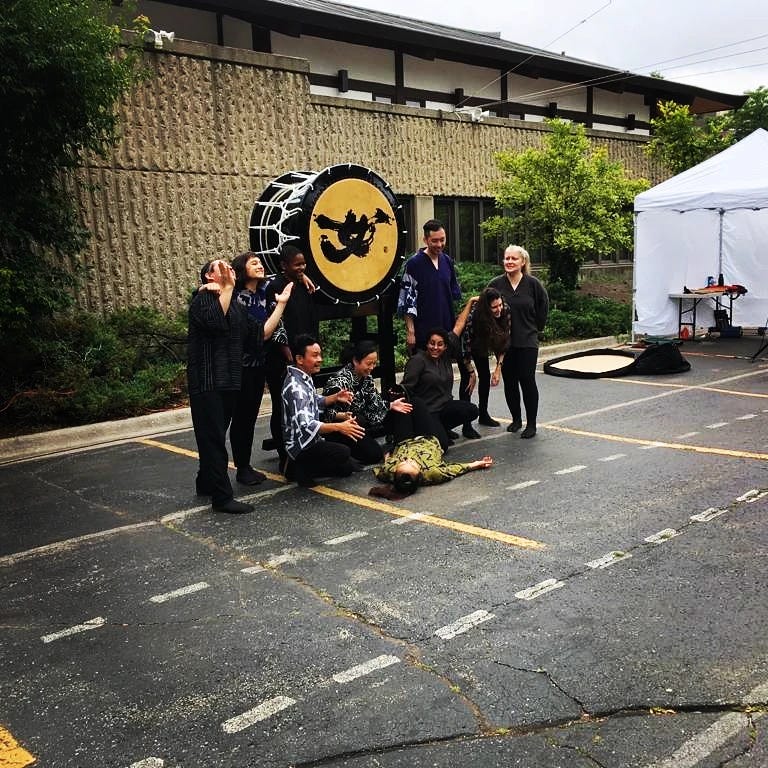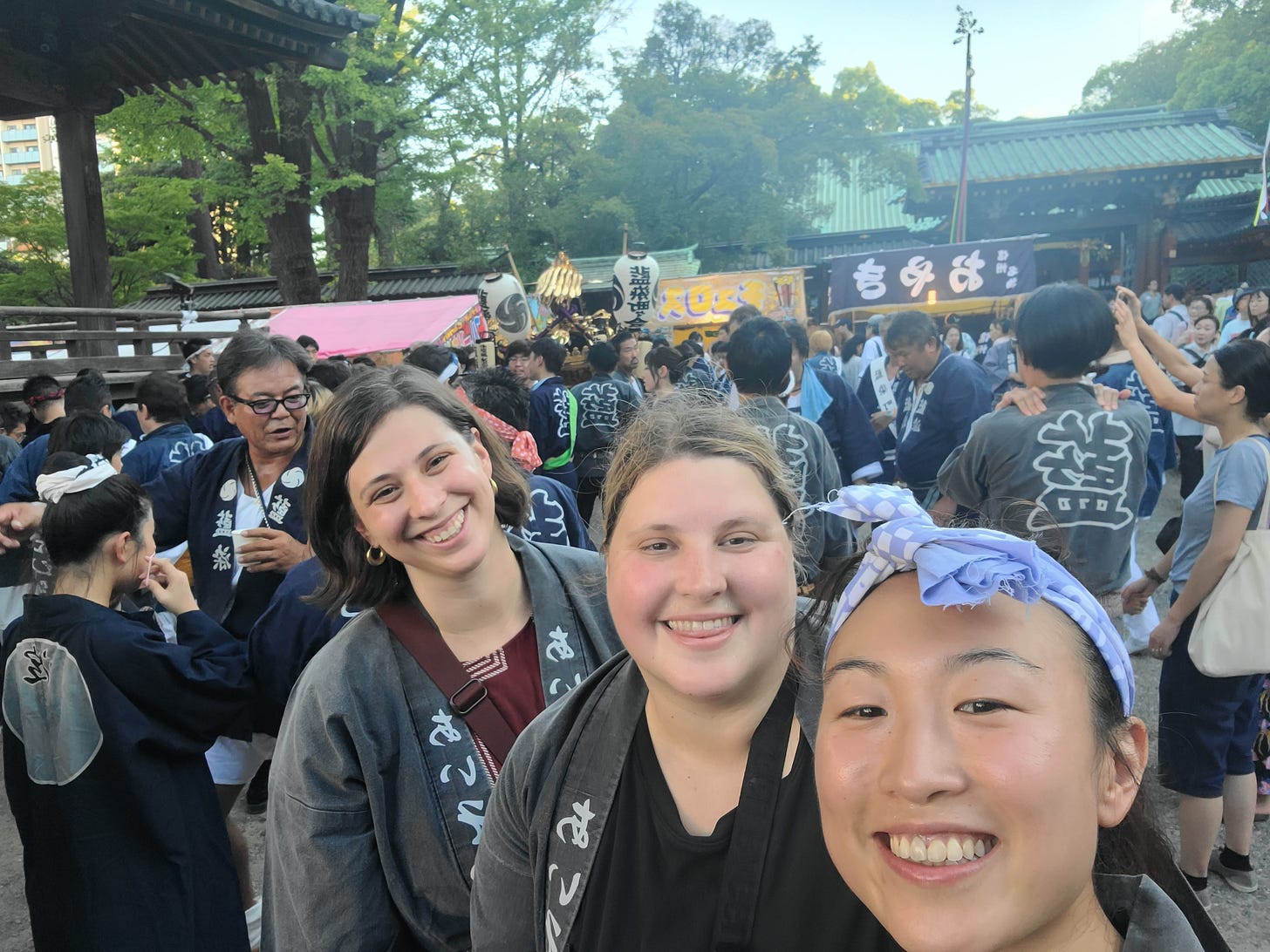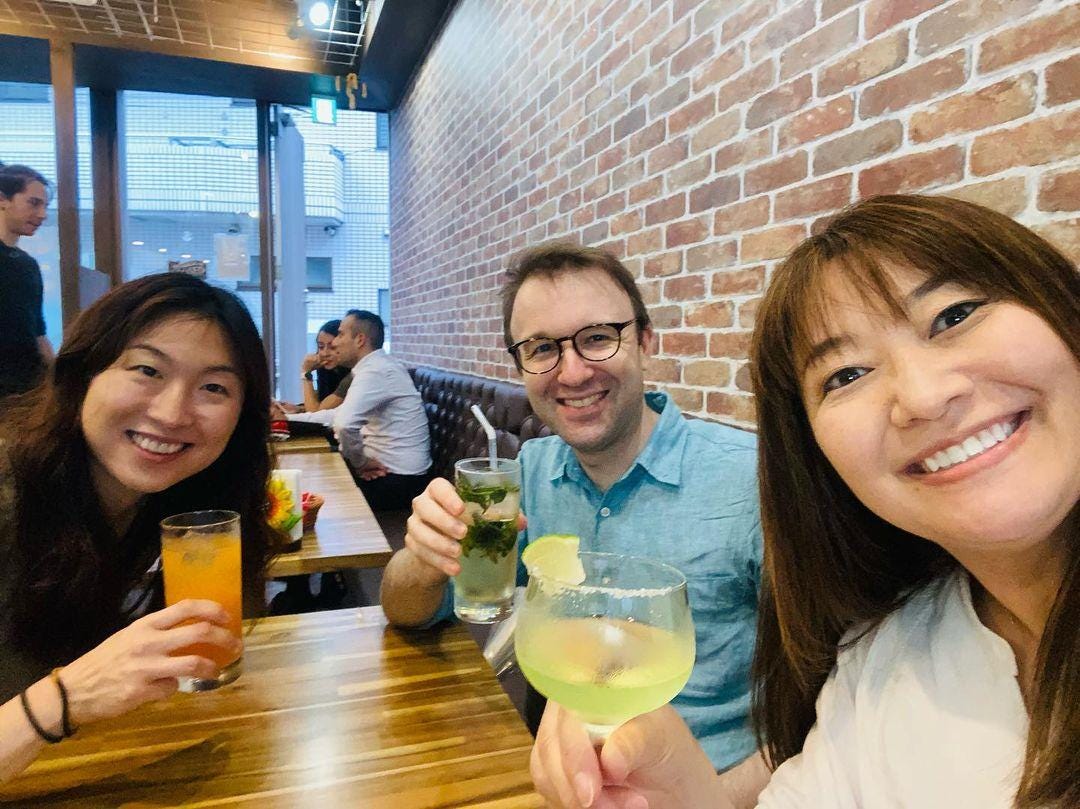We interrupt Emily fangirling over Kodo, Sado, Kaoly san, Gocoo, and Tawoo to talk to acknowledge that I’ve been in Japan for a year! And since that year of doing emails, SNS recaps that lasted for 3 months, and changing to substack, there’s been new viewers to this wild life of mine. So allow me to re-introduce myself, and then I’ll get into what I did on this anniversary and a quick shout out.
Who am I and what are you doing?
Label me, baby! I’m a nobody taiko player, fourth generation Japanese American (Nikkei) who has lost connections to family in Japan. I started playing taiko as a kid through the Midwest Buddhist Temple in Chicago with Ho Etsu Taiko, a dharma school (youth) taiko group. Eventually the kids grew up, and we became a non-profit organization through the member’s hard work and endeavors. I was a trainee with Somei Taiko in Aiea led by Shuji Komagata who has roots with Nihon Taiko Dojo, and later with Kenny Endo (who needs no introduction) and the Taiko Center of the Pacific. I traveled back to Ho Etsu Taiko and have been with them since being one of their many leaders in their non-hierarchy approach, while working an 8:00 - 5:00 job.
I wanted to study taiko in Japan since high school, considered dropping out of college, but was bad at Japanese and going through an identity crisis, as all Asian Americans probably do. Oh, and I was scared of the patriarchy.
So many years later, I met Kaoly san at the KaDON retreat in 2019 where she taught “ELEVEN” a taiko prayer piece about the Tohoku disaster that’s featured in Finding HERbeat, the movie. Every time we ran through the piece, I would cry. I still don’t know why, but that’s what drew me to her; it was something beyond just hitting a drum. So after a year of attempting to get a visa during the Corona shutdown with the help of Aya and Kaoly san, I came here a year ago.
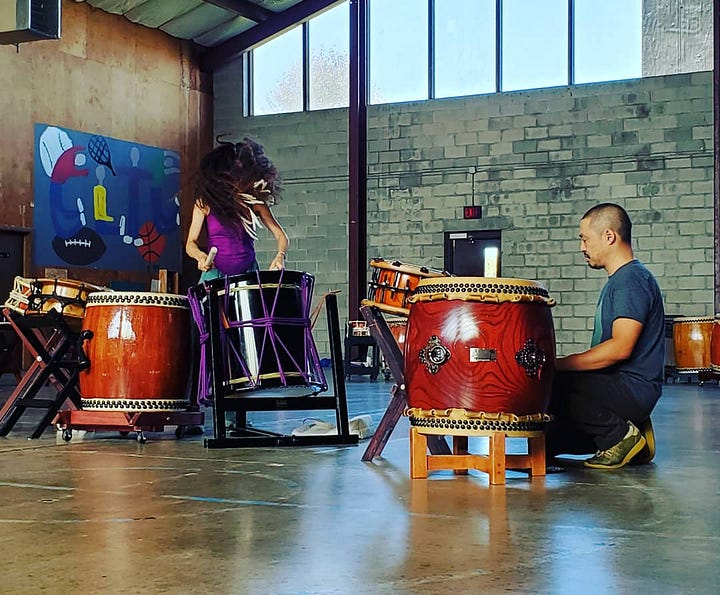
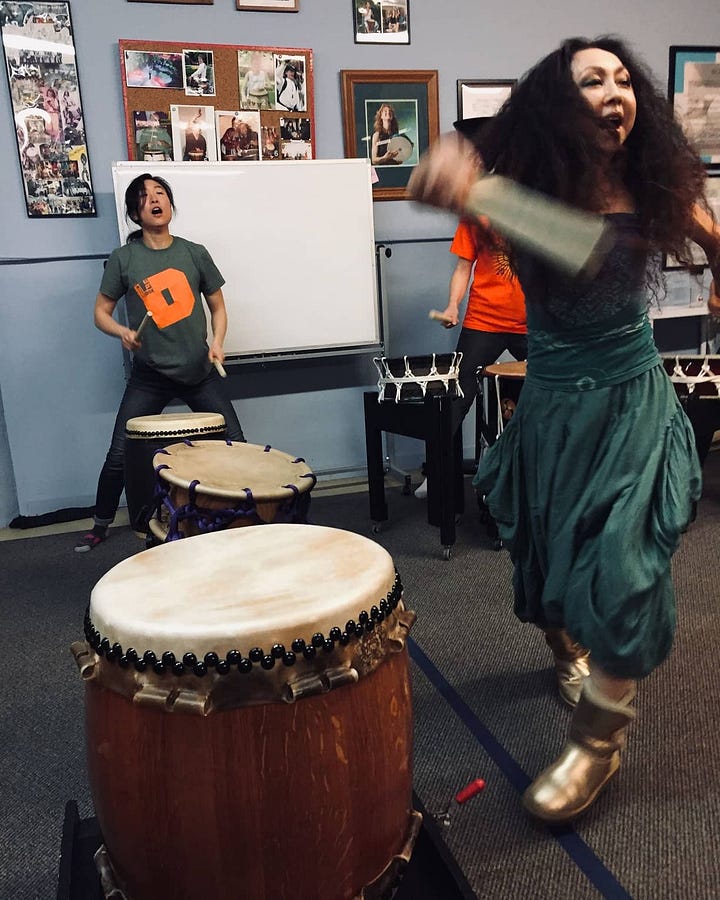
And because of Kaoly san, I instantly had a generous community and close friends, like Eriko, who even let me stay at their homes in Japan. Because of taiko and my connections with the broader taiko community, I’ve met people from all over Japan, and around the world, some of who are also some of my closest friends here. I learn a lot every day, and have gotten to travel around the nation with her pro group GOCOO, TAWOO dojo which I belong to, and other friends along the way.
Yet, this, all of this, was a huge fear of mine. I knew that dropping everything and immersing myself in taiko would lead me to greater questions about how I want to incorporate it in my life, and how I would share it. It might also begrudgingly define what success and failure is for me. Although careers in traditional arts and performing arts are the most enriching, they can also be the most unreliable in a capitalistic world, and so I begin my Type A crisis of what am I doing.
What’s the purpose, or the larger goal of doing this? Where will you go after this?
What will you do when you’re done in a year? What’s your 5 year plan?
Look at your friends making money and buying homes. Again, what the F are you doing, Harada?
Don’t fret, I have a healthy balance of existential thoughts not in 3rd person.
Is it necessary to study taiko in Japan if you consider yourself a serious taiko player?
What is tradition? Why do we feel that we need to maintain it? Are you a legitimate taiko player if you don’t know the traditions?
The great debate of community vs music/ athleticism/ tradition/ other in taiko and how do you balance it.
What is taiko? What is wadaiko? How do you define what is taiko and what isn’t?
Maybe one day I’ll write a substack about the existential ones because it’s more fun, however, I also recognize that none of these ideas and worries are unique, and would guess that every ex-pat taiko player or serious taiko player has gone through something similar. And if enough people request it, I’ll share my views later despite my fears that I will be canceled. The internet is scary.
What I did on this 1 year anniversary:
The share-housemates were invited to participate in the Grand Fall Nezu Matsuri, the first in 4 years! I had the fortune to have my closest friend, Mahalia, and her sister join me. Bless her soul as she was the one who dealt with Emily in identity crisis mode during college. So the 3 of us hanten-ed it up (hanten = traditional Japanese jacket that can wrap in the front. Often worn for taiko performances), and hit the streets of Nezu with a beautiful, massive mikoshi. Another life long dream of mine checked off.
But why was this a dream? I’ve gone off in previous posts about matsuri (festivals) and how taiko is such a critical component. There are god(s?) inside the mikoshi that get paraded around the neighborhood and back to the town’s Shinto shrine to welcome a good harvest of rice in the fall. There are 4 rows of people that carry this massive shrine on their shoulders (someone told me 100 lb each?), and we take turns until you can’t go anymore. You go so hard that you sweat through your shirt and hanten and you want to collapse, and then finally through the exhaustion, you become blissfully present, shouting and smiling with your friends and strangers, riding high spirits, and laughing at the old men who throw their bodies onto the mikoshi to make it even heavier. You’re bruised and sore, but you completed a difficult task with your community and it’s time to drink up and thank everyone for this opportunity. For this festival, they had a bon odori (dancing for your ancestors) at the end, where we dance “Nezu ondo” under the chochin (festival lanterns).
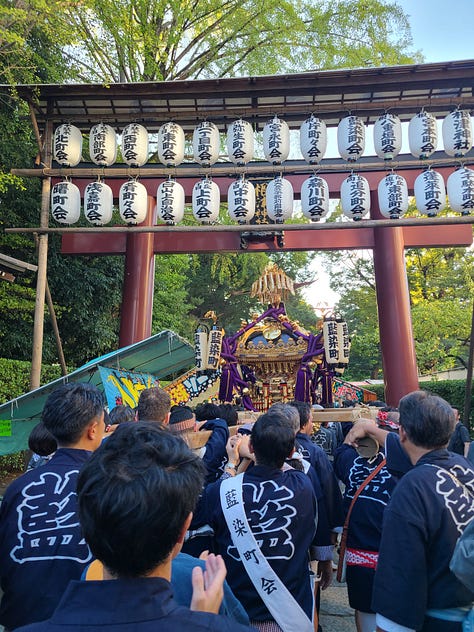
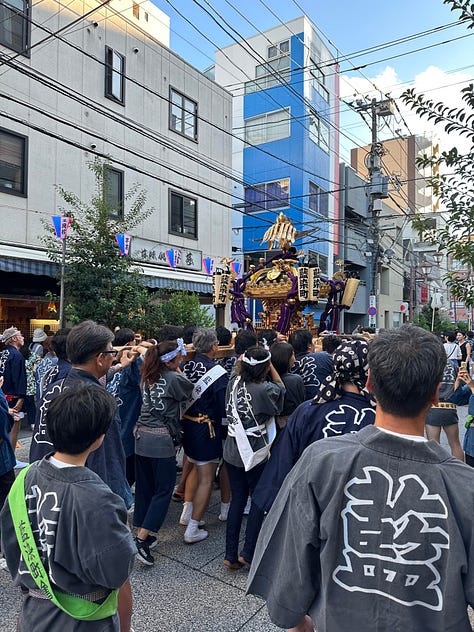
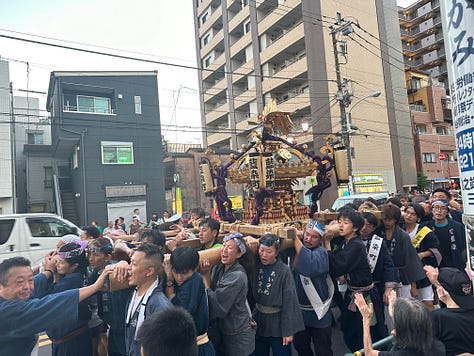
For me, a place isn’t home without a community. It’s how you check up on each other, you meet the newcomers, and you bond over the area that no one else would quite understand unless you’re connected to it. You protect each other, and you endure challenges that results in trust and friendships. And the ohyashi (the accompanying music) that welcomes you when you make it to your destination (the town shrine) is the music of your community. AND the common ohyashi that I’ve heard in Tokyo is highly influential in American kumidaiko.
I’m having a hard time capturing all of the feeling and emotions in words. Participating in a matsuri on the community level absolutely adds more experience that deepens my understanding for kumidaiko, but really it’s just another life experience that makes me realize I made the right choice on coming here a year ago, and it feels full circle to share it with some people that really matter to me who helped shape me for this yearlong plus adventure.
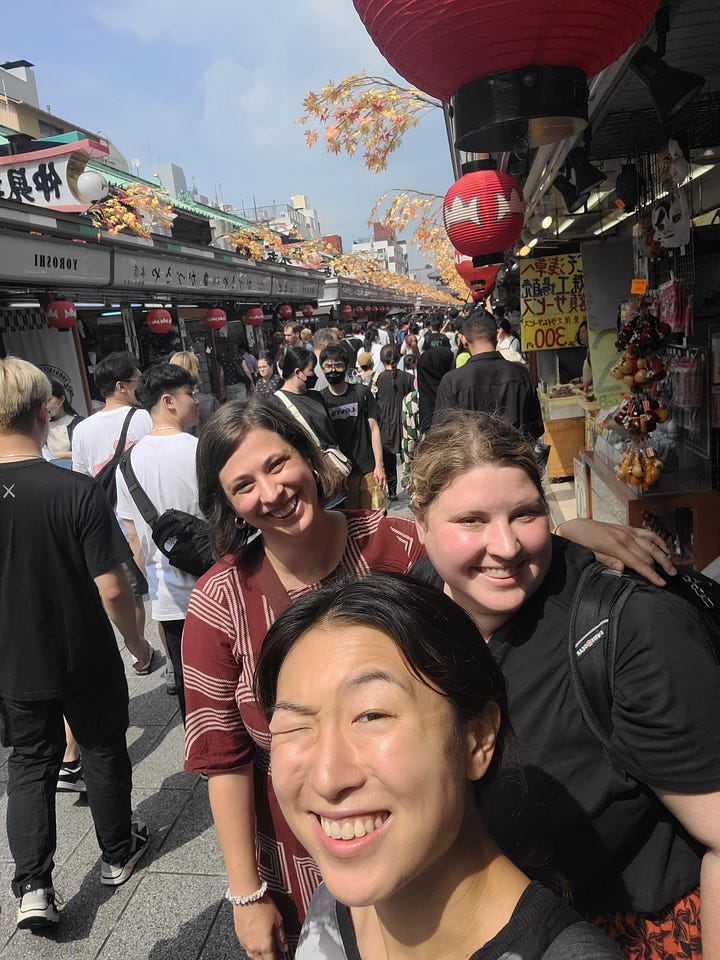
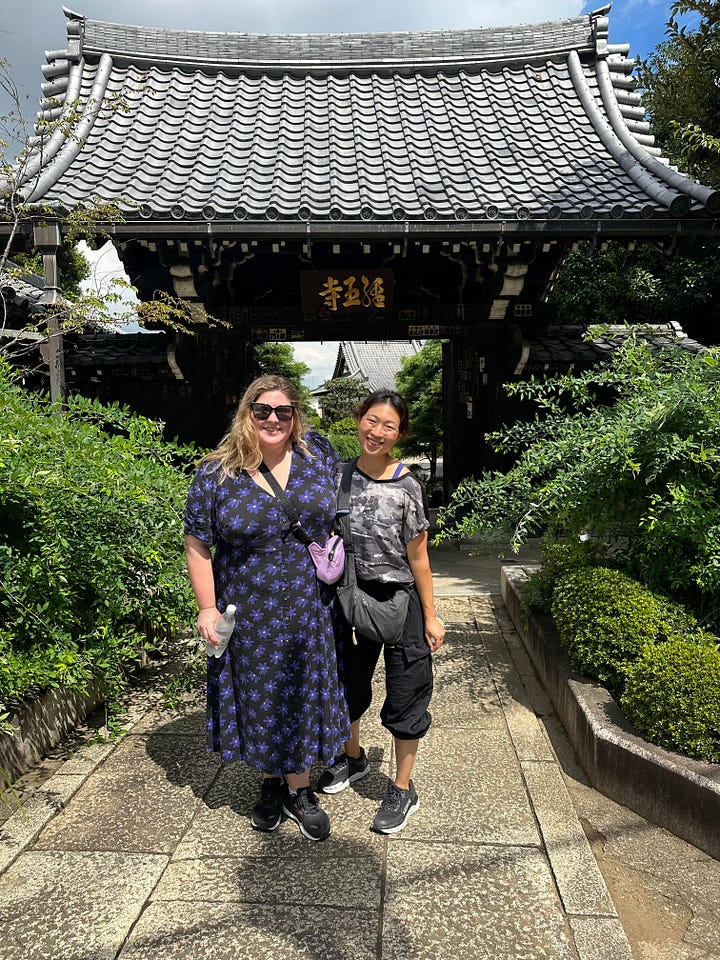
Shout out to TaikoVentures:
I touched on this in the past, but now it’s finally open! The business that supports people who sustain themselves through taiko in a world that doesn’t always want to support cultural arts. Think health insurance and a salary for example.
So while I’m here trying to figure out what to do, Taiko superstar (and friend) Ai Matsuda is moving back to America! She’s been a huge supporter, teacher (in ways she doesn’t even realize), and cheerleader for me (and our other taiko friends in Tokyo). Although I’m sad to lose her, it’s super exciting to see what’s in store. She’s been part of TaikoVentures, along with many influential taiko people for the taiko community. So to all of the taiko people who don’t play but want to support, like investing in a future, perhaps you should look further into this and sign up for an info sesh. Reach out to me if you have any questions and I can set you up with someone.
OH AND FOOD:
Post Mikoshi beer and Asakusa melon pan with ice cream!
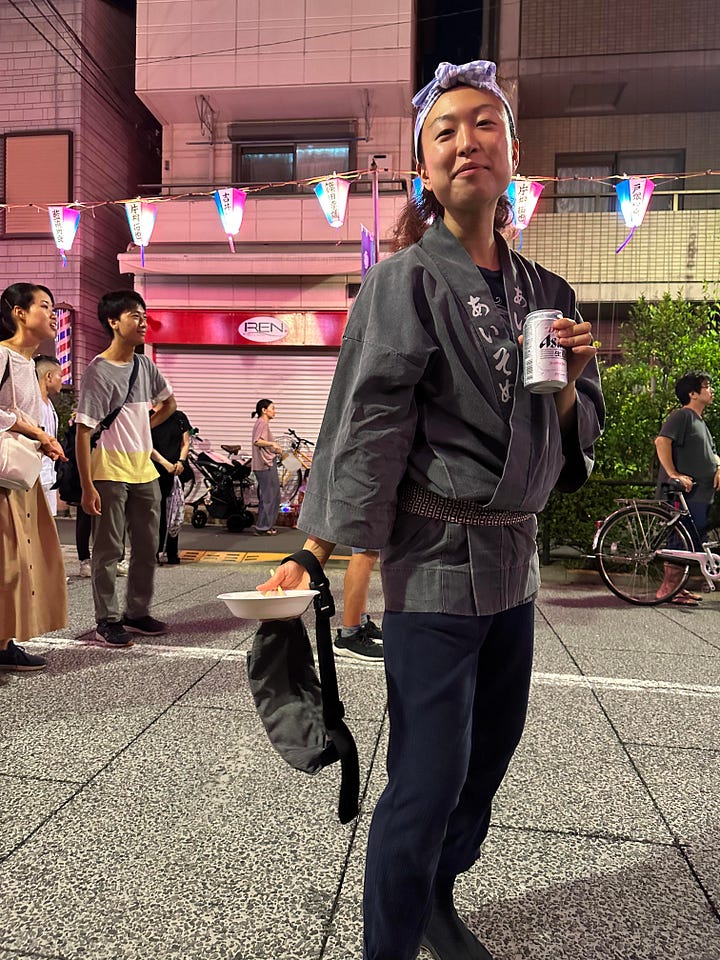
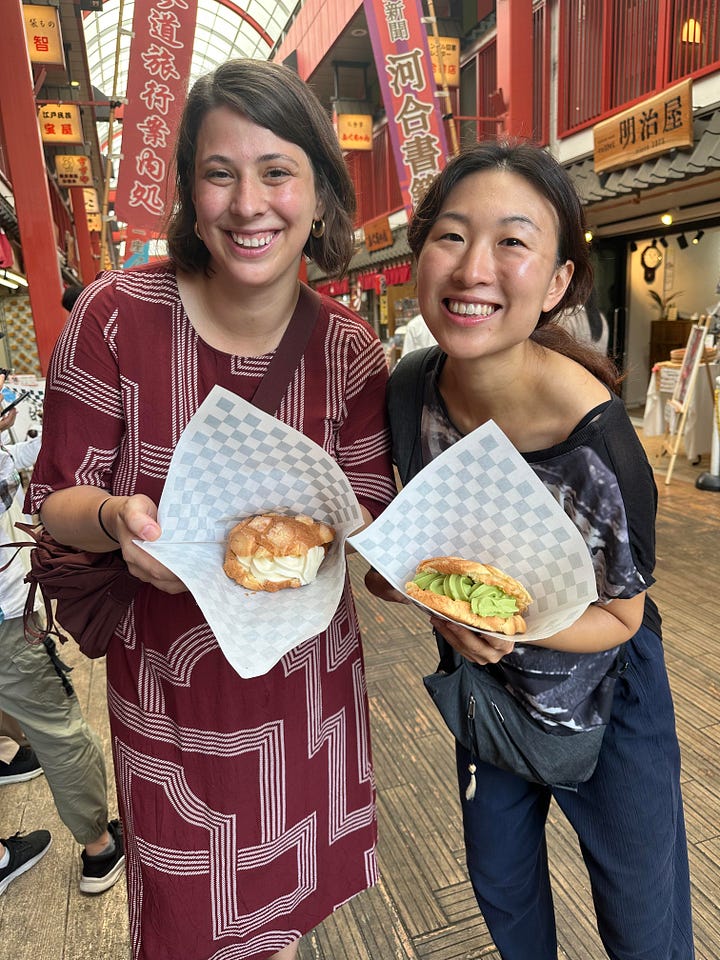
Future posts will include Ogi Matsuri, tips for visiting a TAWOO practice, and whatever else you’re curious about!



